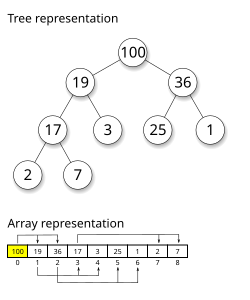- Max-Heap: For any given node, its value is greater than or equal to the value of its children. This means the largest element is always at the root of the tree.
- Min-Heap: For any given node, its value is less than or equal to the value of its children. The smallest element is always at the root.

Analogy: Priority Queue
Priority Queues: This is the most common use case for heaps. A priority queue is an abstract data type where each element has a priority, and the element with the highest priority is served first. Heaps are the perfect underlying data structure for this, as they provide O(1) time complexity to find the highest (or lowest) priority element and O(log n) for insertions and deletions. Imagine a hospital emergency room where patients are treated based on severity:- The patient with the highest priority (most critical) is seen first
- New patients are inserted in the queue, and the system ensures the most critical stays on top

